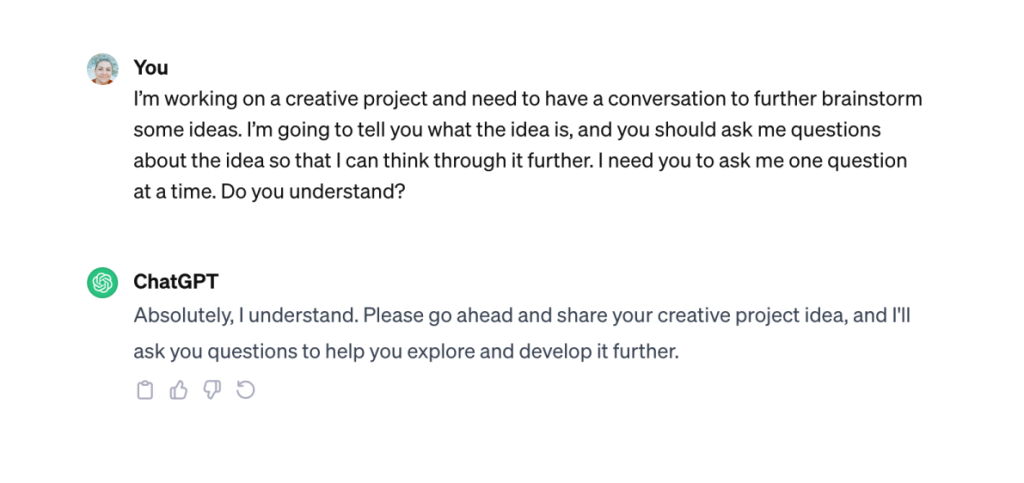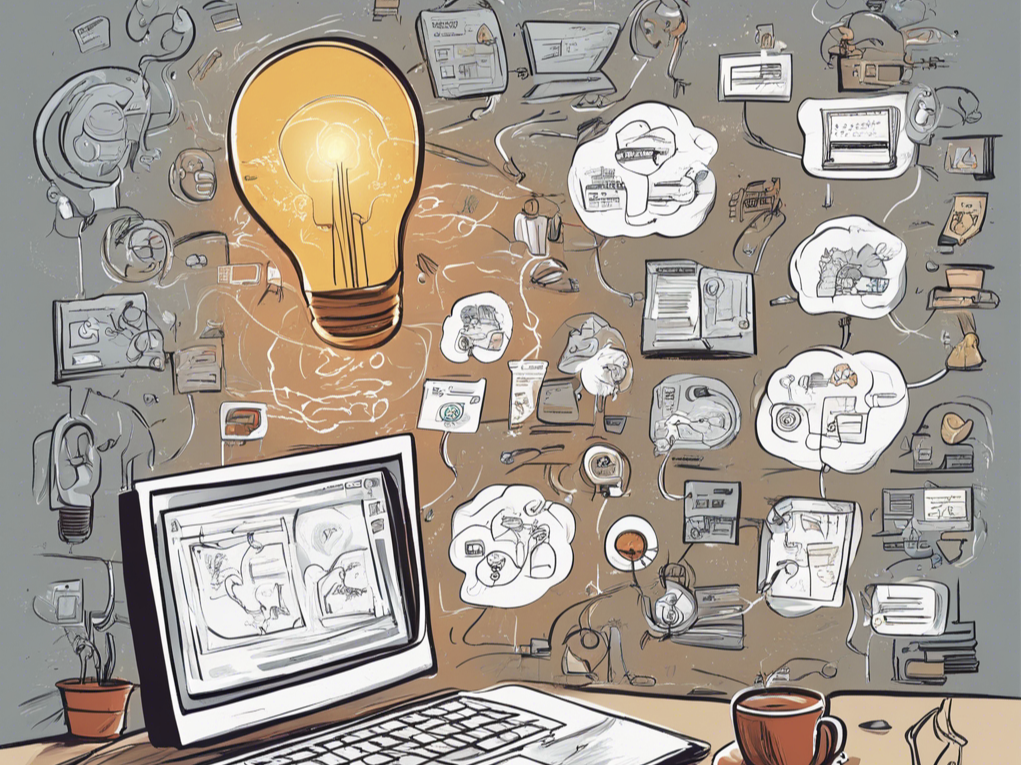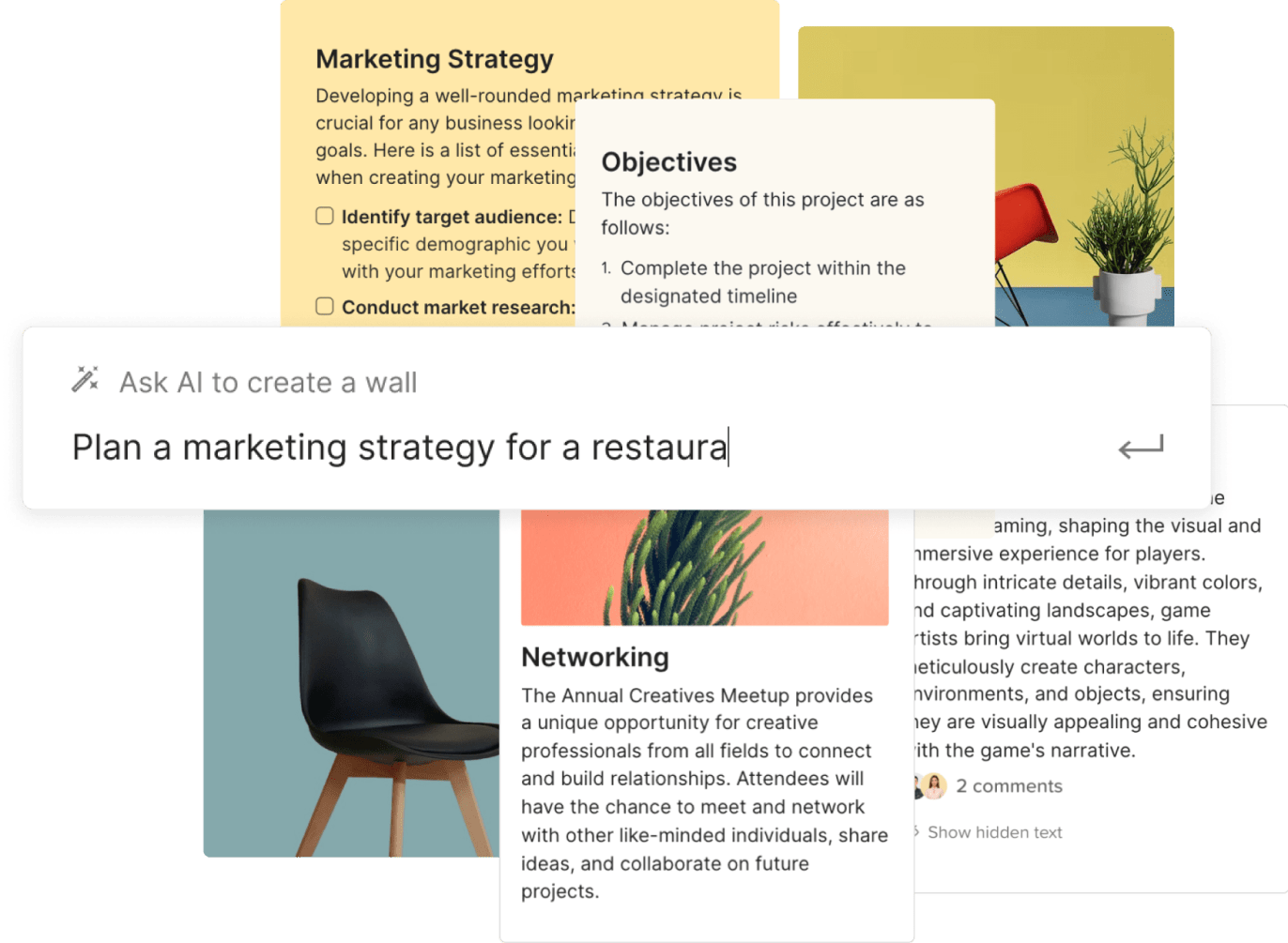Brainstorming is a vital ingredient in the recipe for any new project, whether it’s kickstarting a business or crafting a piece of content. This process, which often unfolds in both formal and informal settings, lays the groundwork for innovative ideas and solutions.
There’s a wide array of brainstorming techniques available, suitable for both solo thinkers and collaborative teams. Techniques like mind mapping and freewriting are popular choices across various industries, aiding in the generation of fresh ideas and novel solutions.
In this article, we’ll delve into several effective ways to leverage ChatGPT for brainstorming, adaptable to various project types. We aim to showcase how ChatGPT can be a valuable resource in your brainstorming toolkit, helping you to unlock creative potential and develop impactful ideas.
Using AI for Brainstorming Business Ideas
Maybe you have a vague idea of some kind of business you want to start. Something like “an app” or a “wellness business” but have no idea how to narrow it down. Searching Google for business ideas will just return a ton of generic lists of business ideas, often not even close to what you might actually be looking for.
Asking AI to generate a list of ideas works better, especially because you can enter certain parameters for what you want from a business. For example, you might want to start a business you can do from home, or one with startup costs under $10,000 (or under $1,000).
For example:
Give me 10 ideas for wellness businesses I could start from home with less than $5,000 in startup funds.
Based on that prompt, ChatGPT returned some fairly straightforward ideas (online fitness coaching or meditation classes), but also returned some more unique ideas that you may not have thought of (like personalized wellness retreats for small groups).
Using AI for Brainstorming Product Ideas
If you have identified a problem you’d like to solve, AI can be an excellent way to come up with possible solutions. While some will be generic ideas, AI may surprise you with some off-the-wall solutions you can build on. Here’s an example of a prompt to start with:
I’m trying to solve the issue of time management for people who rebel against rigid schedules. Can you give me ten ideas of how this might be accomplished, focusing on technological solutions?
While some of the solutions ChatGPT recommended were pretty generic and included things that are already being done (like gamified time management), but some of them were really interesting places to start, like an app that makes mood-based task recommendations.
From there, you can use additional prompts to get more insight and more ideas. For example, you can ask ChatGPT how a particular idea might work in practice and it will give further details. If we wanted more ideas on the mood-based task recommender app, a prompt such as this is a good place to start:
How might a mood-based task recommender work?
From there, ChatGPT gave me information on how the mood tracking and analysis might work (like using biometric input or even behavioral analysis), a recommendation engine, and integration with other apps (like your calendar). Feel free to go back and forth with the AI in order to get more details or clarification, or to have it generate additional ideas.
Using AI for Brainstorming Creative Ideas
If you’re looking for help brainstorming creative ideas, AI is an excellent partner. One of the biggest things a lot of creatives need is someone to bounce ideas off of. Most of us turn to a friend or maybe a colleague, but they often aren’t as invested in the idea as we are, and so the conversation can be lackluster.
AI, on the other hand, will stay invested in the conversation and follow the prompts you give it. Here’s a prompt to get started with a back-and-forth brainstorming conversation for your creative ideas:
I’m working on a creative project and need to have a conversation to further brainstorm some ideas. I’m going to tell you what the idea is, and you should ask me questions about the idea so that I can think through it further. I need you to ask me one question at a time. Do you understand?
Once ChatGPT confirms that it understands the prompt, you can give as much or as little information as you have about the idea and go from there. Note that if you don’t tell it to only ask you one question at a time, it may spit out a dozen or more questions and completely overwhelm you!

Another great way to brainstorm creative ideas using AI is to ask it “what if” questions. AI is great at generating possible outcomes to situations. For example, when working on a novel outline set in a sci-fi or fantasy world, you could ask AI the implications of changes to certain aspects of society and their effects on other parts of daily life. I did this recently with a novel about a world that has become largely uninhabitable during the daytime, so people have become mostly nocturnal. ChatGPT gave me all sorts of information about everything from how things like business and the economy would change to how it would impact human health if we were exposed to very little sunlight.
Here are a few examples of how to start prompts like this:
What would happen if [event] occurred? How would it impact daily life?
How would [people, businesses, governments, etc.] adapt to [event]?
If [event] happened, what new technologies might humans develop to cope with the effects?
Feeding scenarios to AI and asking about how humans might cope with any changes is a fun exercise if you’re working on a creative project, but can also be useful if you’re trying to figure out the future of technology and where opportunities might soon exist.
Using AI for Brainstorming Titles
AI is amazing at brainstorming titles, whether it’s for a book, an article, a course, or anything else. It can also help you brainstorm subtitles, chapter titles, or headings and subheadings.
The great thing about brainstorming titles with AI is that you can ask it for as many versions as you want, and set certain parameters. For example:
Write 15 possible titles for an article about how to brainstorm ideas faster with AI. Each title should include a power word and a number.
One of my favorite techniques for creating titles with AI is to mix-and-match the results. In the above example, ChatGPT gave me titles like “9 Proven Methods to Supercharge Your Brainstorming Using AI”, “10 Rapid-Fire Techniques to Boost Your AI-Assisted Brainstorming”, and “6 Powerful AI Hacks for Quick and Effective Brainstorming”. Instead of using one of those as it is, I could combine them into something like “9 Proven Hacks to Boost Your AI-Assisted Brainstorming”.
Using AI for Brainstorming Content
If you’re a content creator, especially if you do it for a living, coming up with new ideas and creating new content can be one of the more time-consuming parts of the job. Especially if you’ve been doing it for a while and feel like you’ve already covered every idea possible.
AI is an excellent tool for brainstorming new content ideas. I often use it to come up with article ideas around certain topics. For example, if you wanted to create an article about UX design for e-commerce sites with a fresh angle, you could use a prompt like this:
I’m writing an article about UX design for e-commerce sites. What are some unique angles I could use for an article aimed at mid-level designers?
When feeding ChatGPT 4 that prompt, it returned ten unique ideas, including psychology-driven design, accessibility and inclusivity in design, and the evolution of user expectations. Note that you can also specify how many ideas you want.
Once you have some ideas, you can also use ChatGPT to brainstorm outlines or even ask it to compare what other high-ranking articles on the same topic cover. Here’s a good starting prompt for generating an outline:
I’m writing an article about [topic idea] that should be 1200 words and rank highly for the keyword: [keyword]. Generate an outline that should compete well with other articles ranking highly for that keyword.
ChatGPT will then give you a detailed outline of the topics to cover, including subtopics. You can do the same thing for other types of content, too. If you need a list of podcast interview questions, for example, it’s easy enough to ask ChatGPT for relevant questions based on the topic (or even based on the person you’re interviewing).
Final Thoughts
While AI has come a long way in just a few short months, it’s ability to create new ideas is somewhat limited. It can only generate ideas based on the information already in its language model. Because of that, coming up with true innovations solely using AI is unlikely. But as a jumping off point, AI is an excellent partner in brainstorming new ideas.
AI also doesn’t necessarily have a good grasp on what’s currently feasible or recent innovations in a particular area. You’ll want to do your own research to determine whether the ideas generated with AI can actually work in the real world.




